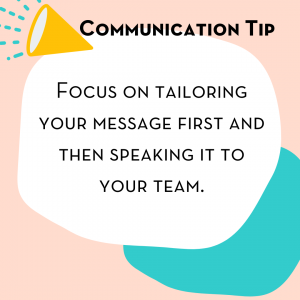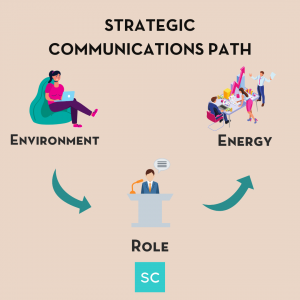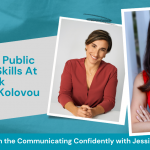How To Use Your Voice Strategically
Part of navigating through life is learning how to use our voice strategically. This means using your voice to get what you want, to express your opinions, or to simply get things done.
 The problem is, most of us focus on what we want to say rather than how we should say it.
The problem is, most of us focus on what we want to say rather than how we should say it.
That means most of us speak, wait for others to react, then we tailor our message. Instead, we should be focusing on tailoring our message first and then saying it. Perhaps you aren’t sure how to tailor your message.
Strategic Communications Path
In order to use your voice strategically, there are three elements that you will want to focus on. Following this path is key in using your voice as an asset. When you focus on these three things, you are approaching communications in a strategic way.

1. Environment
Some of the best communicators are really good at creating the environment they want when they are engaging in conversation. There are different types of environments you can create depending on what your message is all about. For example:
- Warm Environment – This means that you want everyone around you to feel comfortable expressing themselves and to open up.
- Serious Environment – This means that you are setting the tone that you’re gearing up for an urgent or serious conversation.
Think about the environment you’d like to create. You are in control of it!
2. What Role Will You Play
Once you’ve decided on the environment – it’s time to decide what role you will play in this meeting. This means you will determine what your value-add will be. Ask yourself: what is the one bit of information that you know more than anyone else in the room? That is the information and role you are going to play.
Depending on the environment, your role may change as well. There are several different roles you can play, such as:
- Motivator
- Data Person
- Contributing additional information
The role you play will help you tailor your message more strategically because you will be identifying your value-add as noted above. Preparing is important for getting your message across.
3. Energy Levels
Once you have your role established, you will want to think about your energy level. This is really important because depending on your energy level, it can really shape the type of conversation you are going to have. Here are the different energy levels and their impact:
- High Energy – This is great for building momentum with your team. If you are trying to engage or motivate the group, you will want to bring high energy.
- Medium Energy – This is good if you want to keep a level-headed conversation going.
- Low Energy – This is great if you plan to have a serious conversation. Note: low energy does not mean tiredness, it’s a more serious demeanor.
Your tone is what’ll carry your chosen energy level. The key for being a strategic communicator and using your voice as an asset is to always think about the SCP (Strategic Communications Path). Always be aware of the environment, role, and energy that you bring to every conversation.
__
Whenever you’re ready, there are 3 ways we can help you:
- Discover your communications style so you know where to start. Over 4,000 people have found theirs here.
- Attend our monthly communication workshop to build communications confidence (new topics: public speaking, advocating for yourself, building credibility, etc) here.
- Get your brand in front of 43k+ people by sponsoring our newsletter or Soulcast Media | LIVE LinkedIn events [contact: hello@soulcastmedia.com]











